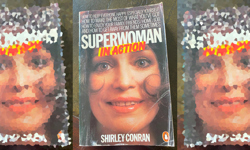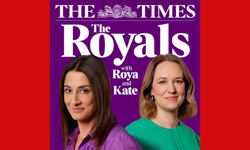Increasing numbers of advertisers are looking to develop exclusive partnerships with media owners whose audience matches their target markets. This is a real opportunity for niche publishers to compete with the national press and mass publications and tap into a new revenue stream beyond newsstand circulation and subscriptions.
This article takes an in-depth look at three impressive examples of valuable commercial partnerships between large advertisers and independent publishers who have punched well above their weight. They make inspirational reading for other niche media owners:
* How Magicalia’s Made for Mums created a new editorial channel to grow awareness of Heinz weaning products in order to secure a sizable sponsorship budget.
* How Military Times promoted Intel and Civilisation V by starting a debate on who was the greatest military leader of all time.
* How Time Out engaged its readers in choosing the most romantic city in the world, built a 15,000 database and boosted World Duty Free’s sales by £3.5m.
1. Made For Mums and Heinz: exclusive weaning channel
Publisher profile: Magicalia’s Made for Mums website network reaches 390,000 parents of under fives. It includes established sites www.practicalparenting.co.uk, www.juniormagazine.co.uk and www.thinkbaby.co.uk
Client objectives: Heinz wanted to raise awareness of its weaning philosophy and reach mums of 4-7 month old babies. They also wanted to promote their Mum’s Own and Cook at Home products. However, there was no existing editorial channel dedicated to weaning.
What the publisher did: Made for Mums created an independent customised feeding channel, which built up to 130 features, 100 recipes, 30 news articles and five videos, plus forums, all of which Heinz sponsored. This formed the most comprehensive editorial resource on weaning and feeding toddlers available anywhere on the web. The channel was cross-promoted on Magicalia sites with high impact, rich media ads designed in-house. This was a competitive pitch with other parenting media, but Heinz liked Magicalia’s plan so much it doubled the budget. The in-house ad promotions were a key part of the appeal.
How it worked: 150,000 users accessed the channel, spending on average four minutes on the site. Heinz reached 22% of their target market. Awareness grew from 55% to 75% and purchasing from 27% to 49%.
Client quote: “We are thoroughly pleased with the partnership we have with Made for Mums and feel our activity is the start of something truly great. The Made for Mums team completely understand what we are trying to achieve, working with us in true partnership. Heinz Baby now has an excellent platform to position ourselves as thought leaders alongside specialist, expert content and deeply engage with our target audience.” Katie Bleach, Marketing Manager, Heinz Baby.
Publisher quote: “In responding to the brief, we created a partnership that provided Heinz with a platform to position themselves as thought leaders in the field of weaning. This partnership has delivered value for readers, advertiser and publisher alike without compromising editorial integrity and we’re delighted that Heinz and their agency have had nothing but praise for the partnership and plan to extend for a further year.” Duncan Tickell, MD, Magicalia.
Next steps: As I write, Magicalia are discussing the next campaign with Heinz with an extension for the remainder of 2011 very likely.
2. Military Times and Intel: who is the greatest military leader
Publisher profile:Military Times is a new military history magazine, which Chelsea launched in September 2010, spotting a gap in the history magazine market. Its mission is to bring history’s most significant battles to life with action-packed narrative, expert analysis, battlefield guides, and eye-witness accounts. Across print, online and email, Military Times reaches 30,000 history enthusiasts every month. The audience is knowledgeable and opinionated.
Client objectives: Intel work closely with gaming partners who use their processing power; Civilisation V is a game that allows players to take control of a major civilisation from history and lead it to greatness: a great fit with Military Times readers.
What the publisher did: Military Times created a debate: Who is the Greatest Military Leader of all Time? This began in the pages of the magazine, and then spread online. Notable history editors and bloggers contributed articles in three consecutive issues of the magazine, and a dedicated channel on the website. Readers were encouraged to comment and vote for their favourite leader. All activity was branded, with the website re-skinned with Intel branding. To grow the debate, the team used specialist channels including military history forums and radio interviews: Military Times’ editor even spoke on British Forces Radio, reaching twenty countries worldwide.
How it worked: Web traffic increased 400% by successfully tapping into various communities. The forums and social media posts showed how the debate captured the interest of an audience beyond Military Times’ own channels. 2000 entries were posted on the website, many mini essays on why a particular leader should win.
Publisher quote: “It’s about knowing what you are good at, and leveraging that to engage your audience. Create expert content and associate the client’s messages with it.” Luke Bilton, Publisher, Military Times.
Next steps: Military Times have since created another project for Intel; a supplement about the history of Japanese Samurai warfare. This sixteen page supplement was written by Professor Stephen Turnbull, a leading name in military history, and was published as a reverse cover section which is a cost-effective alternative to bagging. The articles were also published online, and in a digital edition. The website had a takeover and Military Times interviewed the developers of the game, shooting a video hosted on the Military Times YouTube channel. This activity increased traffic to the site by 40% month on month.
3. Time Out and World Duty Free: most romantic city in the world
Publisher profile:Time Out needs little introduction; it has been providing cultural guidance to Londoners for decades, and has increasingly become the source of insider know-how for city breaks worldwide, attracting a well-heeled, independent-minded traveller.
Client objectives: World Duty Free wanted to grow their sales around Valentine’s Day and were targeting high-spending couples. Their agency KHWS approached Time Out as they felt there was a good match with their readership.
What the publisher did: Created a survey: Where is the most romantic city in the world? The editorial team chose twelve candidate destinations, and wrote features on each which were published online. Emails were sent out to the World Duty Free database and also to Time Out’s travel database, in total reaching over half a million people. The campaign was backed up by advertorials in the magazine. A microsite was created for readers to vote. World Duty Free backed up the campaign with point of sale displays in airports, including Time Out branding.
How it worked: The microsite got 140,000 page impressions; there were 30,000 online votes and that generated 15,000 names for a shared database for both WDF and Time Out. This delivered £3.5m additional sales for World Duty Free.
Agency quote: “It’s important to respect the editorial team and let them create content that is right for their readership. Both Time Out and WDF contributed their databases and generated new names from the campaign, so it was a true partnership.” Andrew Watts, Director, KHWS.
Next steps: As the 2010 campaign was so successful, it was repeated in 2011 with twelve new cities, again selected by the editorial team. To date, 20,000 votes have been received.
What made these campaigns work?
The striking feature of all these campaigns is the sense of partnership and the willingness of the client to run a further campaign. The starting point was a clear understanding of the readers, and the creation of unique content, a campaign or survey that captured their imagination. All three brought together print coverage, online activity, and opportunities for reader interaction through voting and forums, and used a range of media including video. Military Times took the campaign outside their own media by enlisting history bloggers, getting involved in external forums and even going on radio. The advertiser can also add value to the campaign; World Duty Free used their own database and gave Time Out branding at airport point of sale. The value to the advertiser isn’t just the audience; it’s the expertise of the editorial team and also the contacts they have in their specialist market. Sometimes, having a low circulation title is an advantage, as innovative print executions are less costly while still having great impact.
To design and deliver these sorts of campaigns, publishers need editorial teams willing to think creatively without compromising the essence of their media brand, design and web development capability, and marketing teams who can reach beyond print and digital channels to engage an audience.
While niche publishers are limited by their circulation in growing their newsstand and subscription revenues, they can access new revenues by creating innovative campaigns such as those in this article, where they are only limited by their imagination.
Military Times and Made for Mums have been shortlisted for the Media Pioneer awards run by the Specialist Media Show to recognise innovation and excellence in specialist markets.










